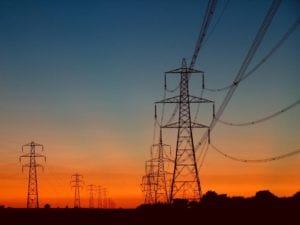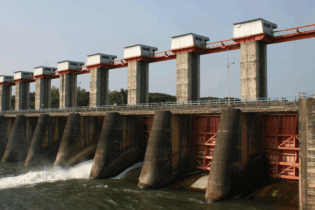Environmental specialists from the Council for Scientific and Industrial Research (CSIR) and the South African National Biodiversity Institute (SANBI) are helping the Department of Environmental Affairs (DEA) and Eskom to streamline the environmental authorisation process for the expansion of South Africa’s electrical infrastructure.
The CSIR and SANBI have been commissioned to undertake a Strategic Environmental Assessment (SEA) which aims to make planning and building of new power lines more efficient. “Expansion of electricity infrastructure is a national priority which will unlock economic growth, so Eskom is looking up to 30 years ahead at where future power will come from and where it will be needed,” explains CSIR environmental researcher Marshall Mabin. “Through this assessment, the DEA is helping Eskom to cut the delivery time of new power lines, leading to maximum economic impact with the least possible disruption to the environment.” Eskom has identified five 100km-wide corridors where its future transmission lines will link power-generating capacity with substations, transformers and electricity users. This is based on long-range forecasts of future supply and demand requirements. The CSIR team is advising on the best possible route for power lines within these corridors. “The most economical way to build power transmission infrastructure is in a straight line from the source of the power to those who need it,” says Kevin Leask, Eskom chief engineer for transmission planning. “But we need to take account of social, environmental and heritage concerns. The CSIR is making sure our future grid infrastructure has the least possible negative impact and the biggest possible benefit.”Using the latest geographic information systems and software, the CSIR will create maps and models of features from national parks, commercial forests and world heritage sites to game farms, wetlands, tourist routes, towns and cities. Among areas to avoid are zones with rare or sensitive fauna and flora, and the site of the Square Kilometre Array radio astronomy site, which is highly sensitive to electrical interference.
Vast amounts of data is being gathered by CSIR and SANBI researchers from hundreds of organisations, in a giant visual database which will identify the best route for the future power lines, avoiding some areas but also optimising future power supply to special economic zones identified by government. The project must also take account of long-term municipal, provincial and national infrastructure plans as well as provincial and local economic development strategies. The project is due for completion in December 2015 after which the CSIR’s recommendations will be taken to cabinet for approval, and the power corridors gazetted for expansion of electrical infrastructure.







